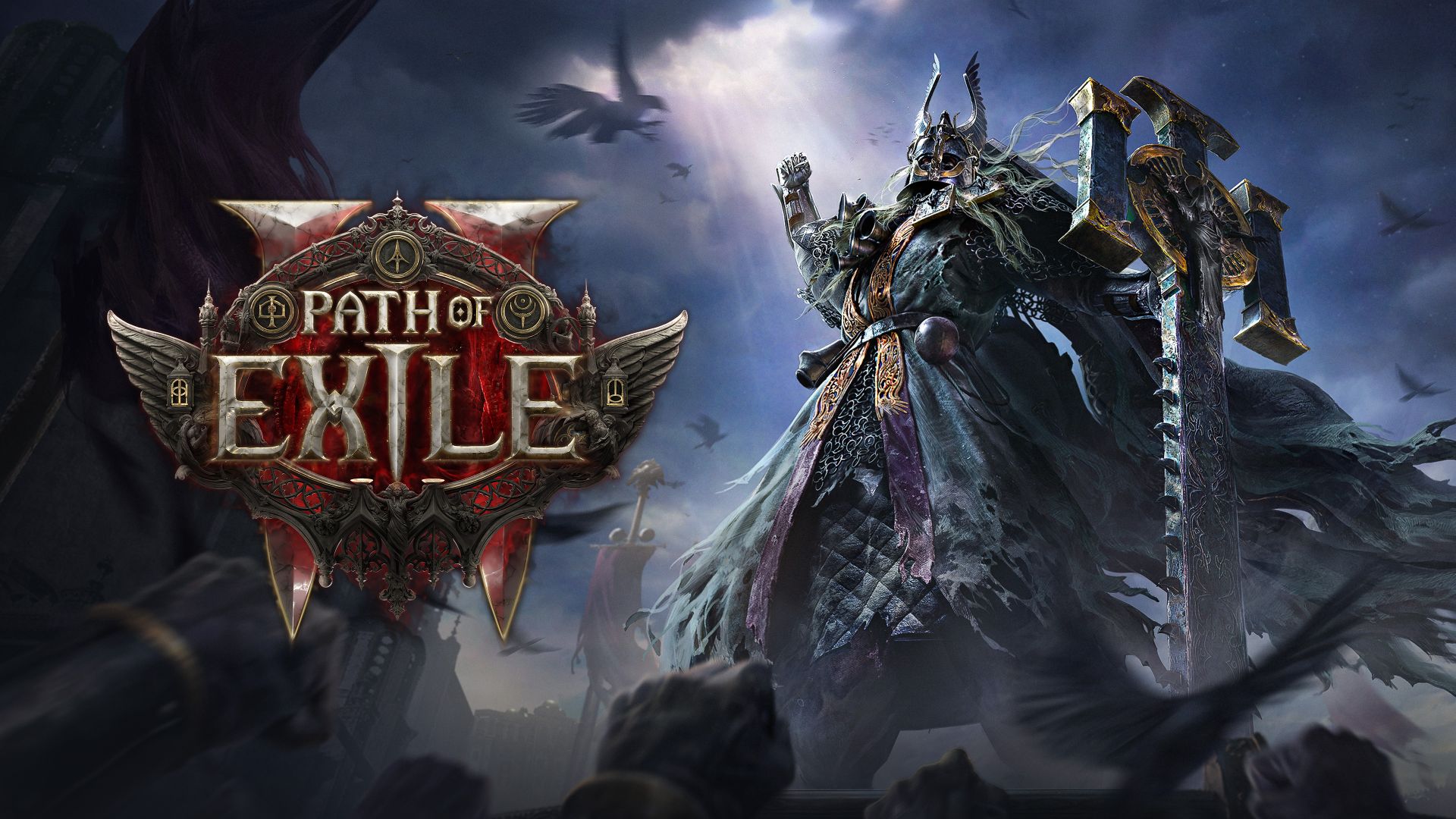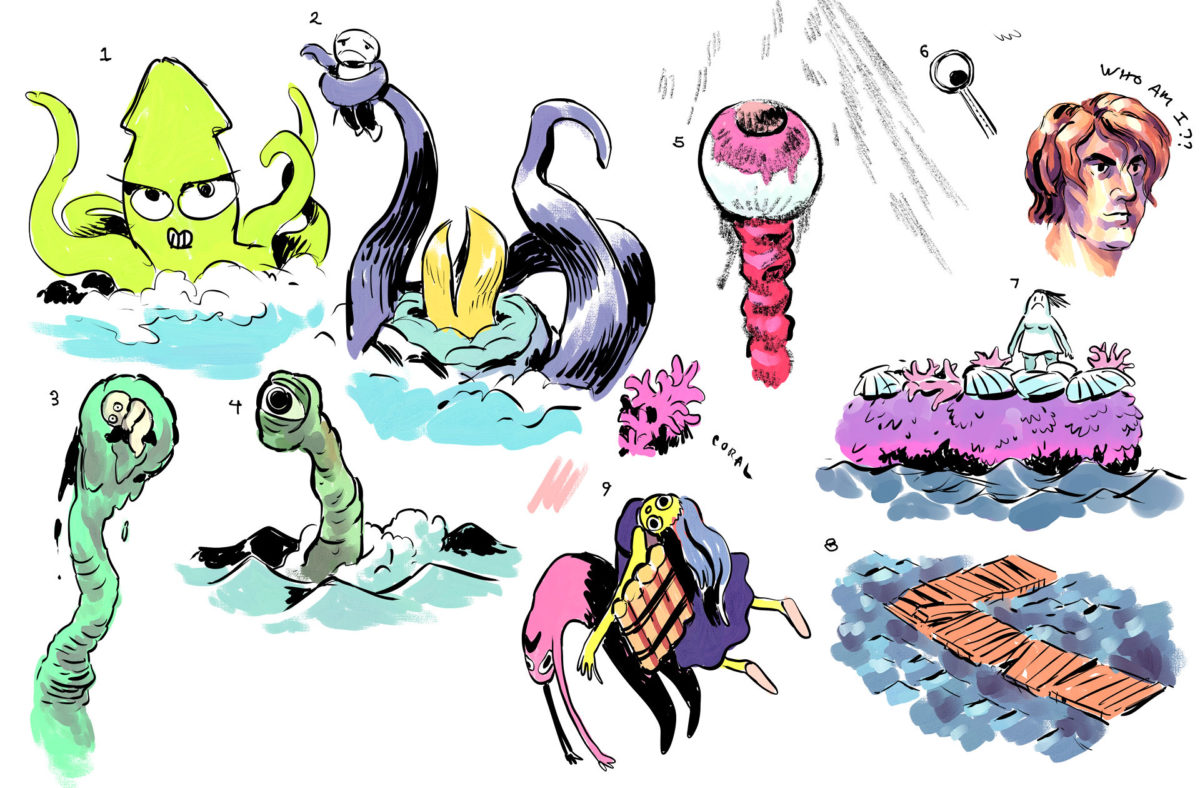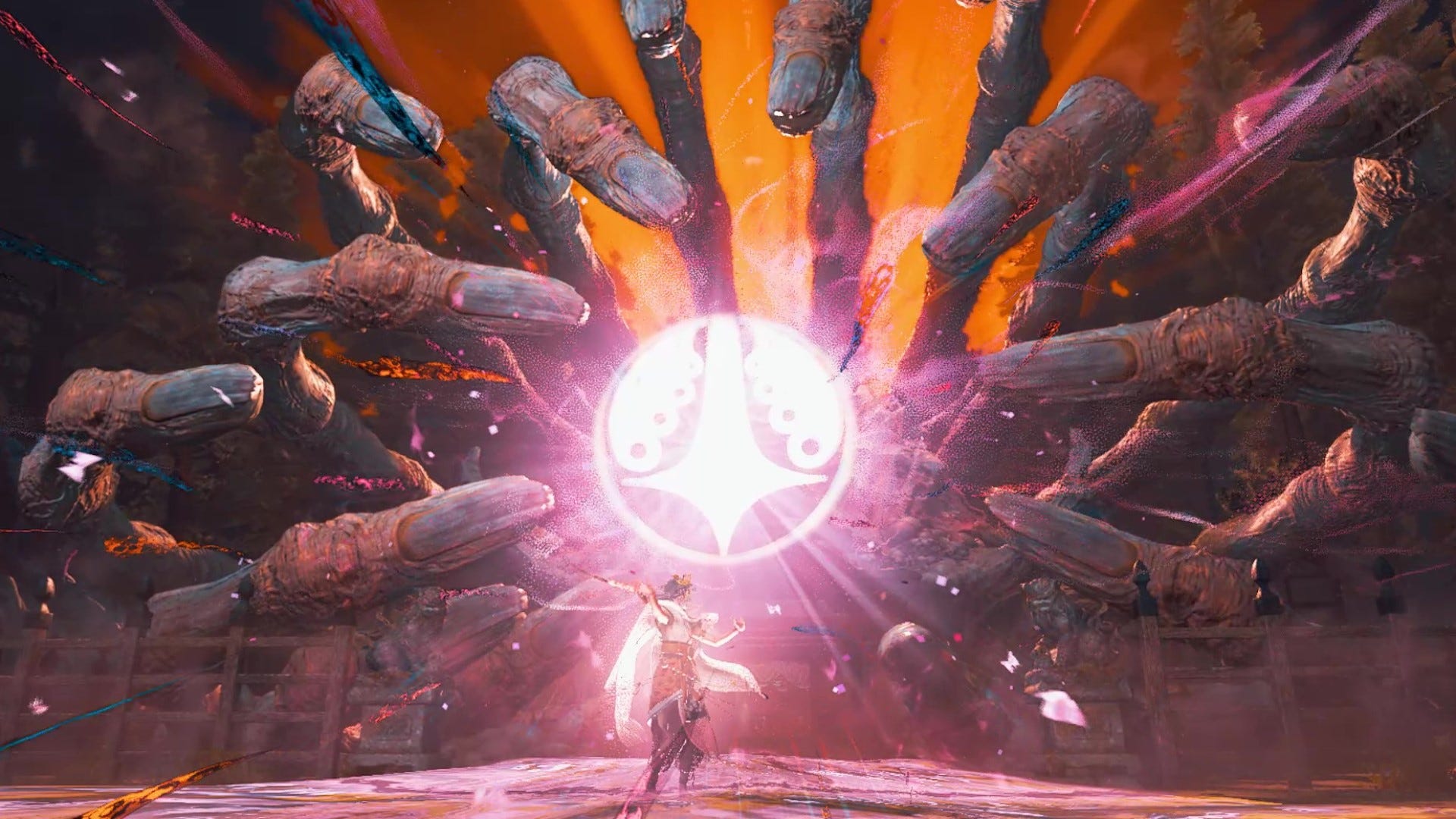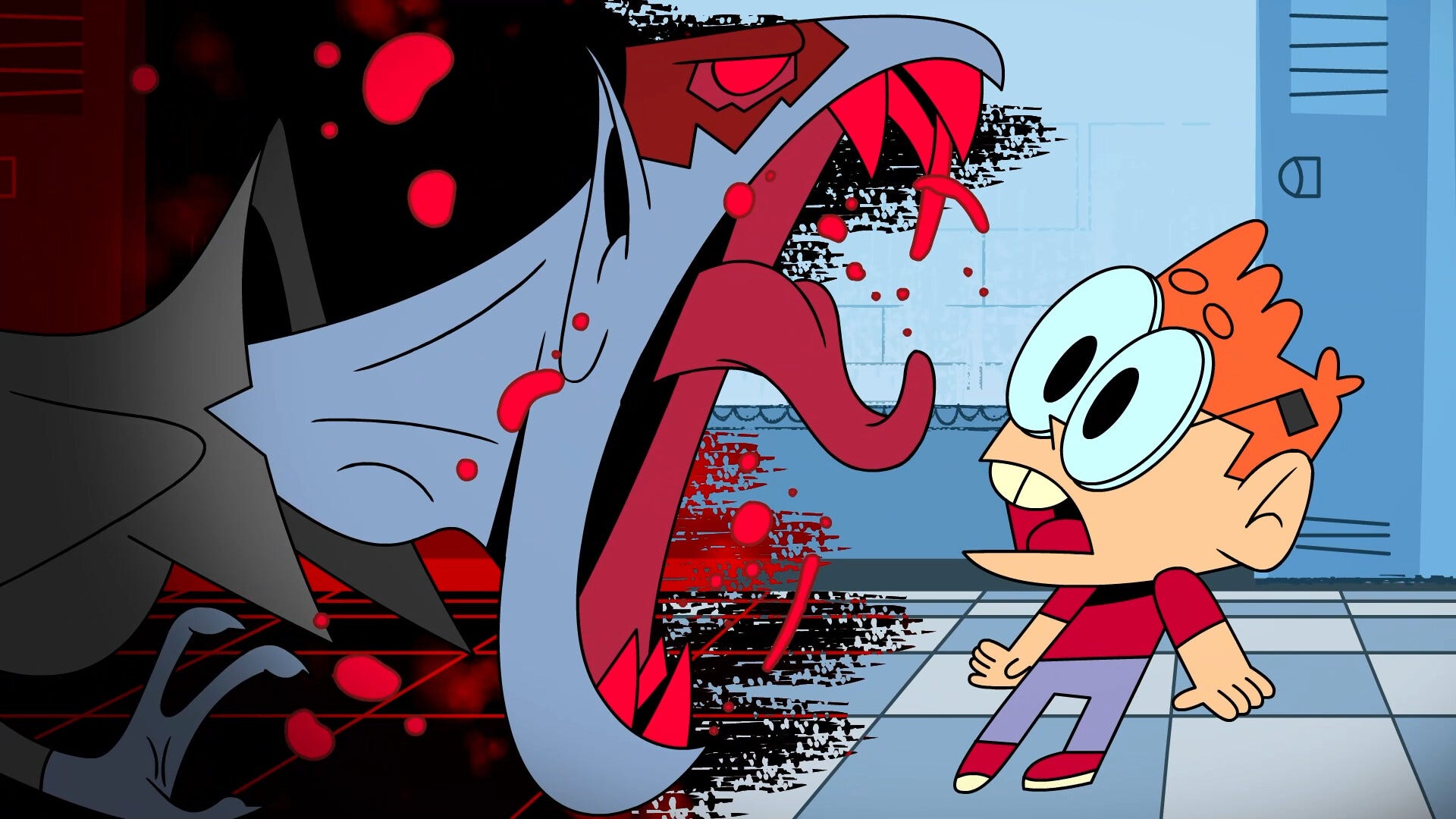Summary
- We go hands-on with a recent build of Path of Exile 2 and talk with Game Director Jonathan Rogers.
- Unique for Xbox release will be a refined controller scheme, cross-platform progression, and couch co-op support.
- Path of Exile 2 is currently planned for early access release in 2024.
Path of Exile 2’s character screen sets the mood early by featuring a variety of classes, each with a noose around their necks. Once I confirm my selection, the trap is sprung, and every neck is snapped save for mine as the rope gives way. My witch scurries away into the nearby brush and the adventure begins. The message is clear: this place is evil.
The original Path of Exile carved a path of innovation for the action role-playing genre when it was released on PC in 2013 (and in 2017 on Xbox). It was an instant classic that would go on to develop a fervent following, be hailed by critics, and establish a compelling new world to explore. Now, Grinding Gear Games is on the verge of sending us back to the world of Wraeclast with the upcoming Path of Exile 2. Originally planned as a massive expansion, PoE 2 has grown into its own beast with a slew of innovations while retaining what made the original so great to begin with — we got a feel for this recently during a hands-on session.
“For Path of Exile 2 we really want to make sure that we are keeping all the depth that PoE is known for, while removing a lot of unnecessary barriers that new players could easily stumble over. There were a lot of systems in PoE1 that added complexity without really adding any depth,” says Path of Exile 2 Game Director Jonathan Rogers.
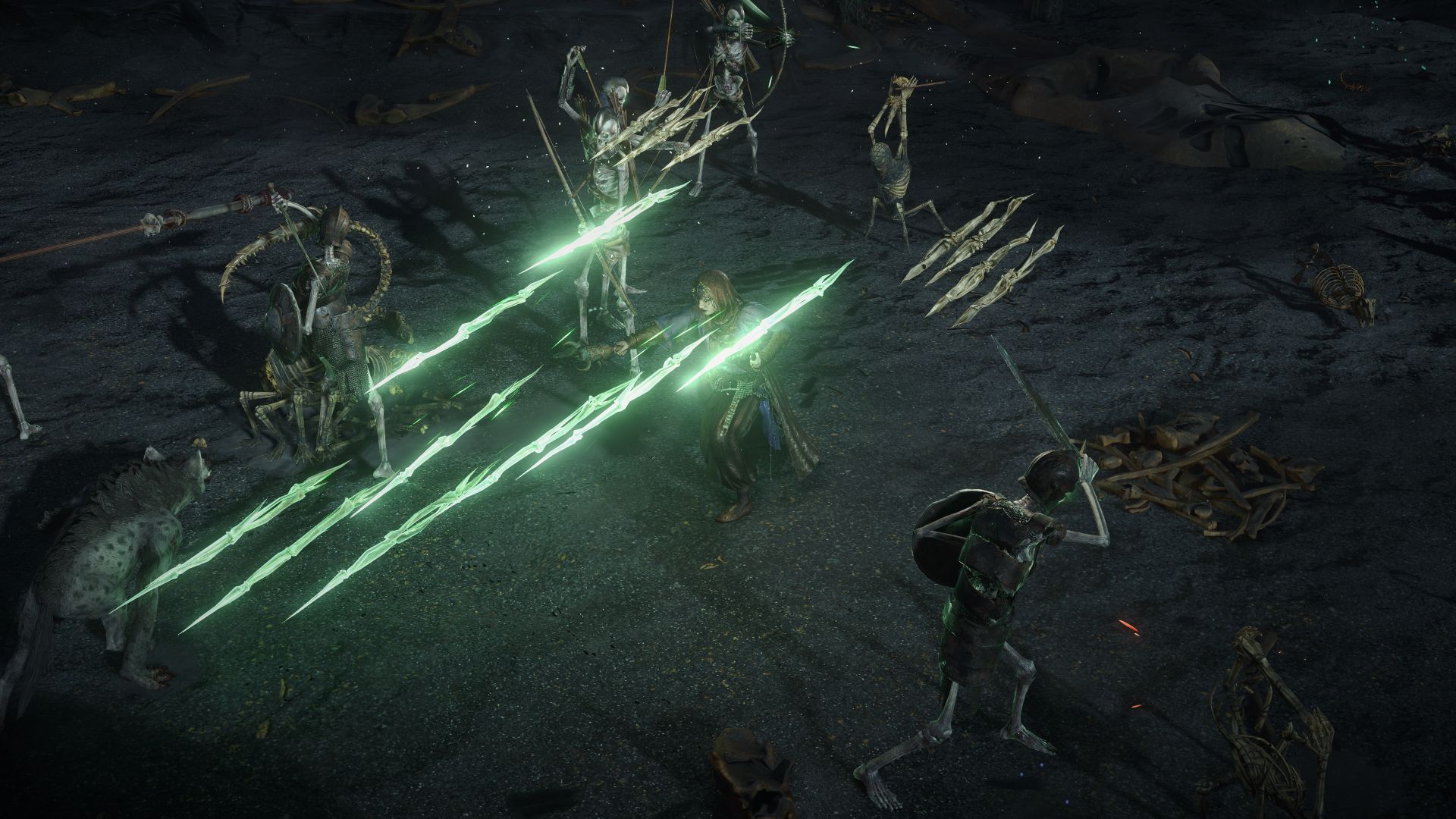
“A great example was skill slots being tied to items in PoE1. Now your character just has skill slots for gems by default (more on this in a bit). In PoE2 we get to keep all the customization that itemized skills gave us, but without all the annoying details around having to change your items out whenever you want to try out a new skill combo. You can build your character with interesting combos between unique items, passive skills and abilities, but it should be a lot more accessible.”
The game is building not just on the mechanics of the original, but the story, too. Path of Exile 2 is set some 20 years after the events of the original game. Since the destruction of the first game’s big bad, the Beast, the world has been freed of its corruption and Wraeclast, your primary location from the original game, has been reclaimed; but that has created its own issues as well. The gods that were once kept in check by the Beast are now ravaging parts of the plagued continent, while others are controlled by tyrants seizing the opportunity for power. This is where you come in, as your character is dropped into a small area to the north called Ogham, where the land appears to be sickening once more. Again, it taps into the deliciously evil surroundings; dire and dread seem to be key tenants of Path of Exile 2’s world design.
Rogers details about what goes into building such an enticingly creepy world to explore within Path of Exile 2: “The first step of any world area design is working out what it was used for, and what kind of people were there — we need to make sure that this process starts with a dark fantasy theme and can mean designing cultures with “off” elements to them. This is true even for the cultures that are friendly to the player.
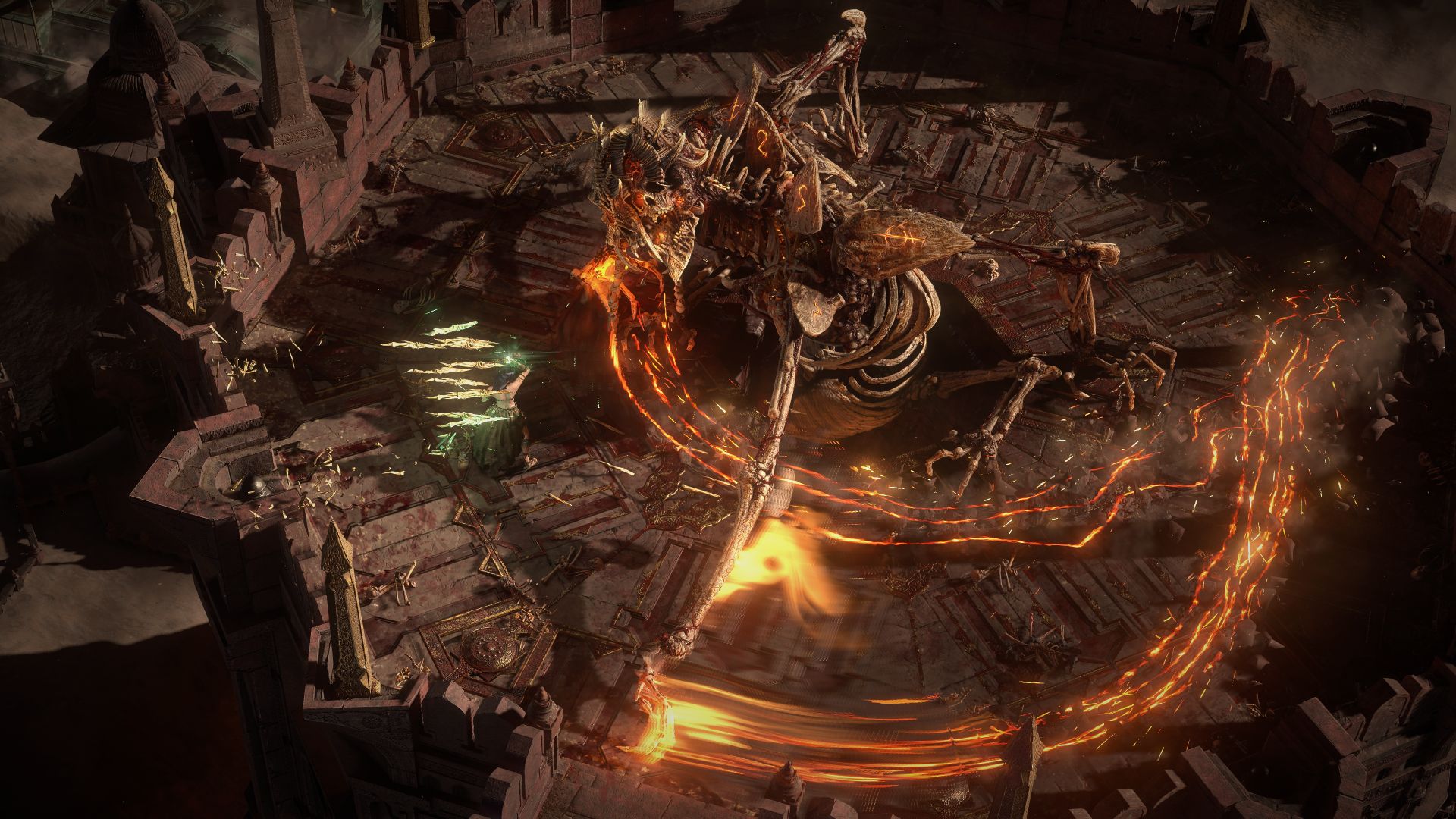
“From there we try to find references for some kind of look that we are after. Usually, we want to make sure that there is some kind of “creepy” element to the area to evoke. Even something as simple as a style of rock can produce uneasy feelings in players, but there are a lot of other details to achieving this. A great example is lighting. We try to light the game like a horror movie. That means having high contrast shadows, and not using too much ambient lighting. Even a bright area like a Jungle in daytime can appear ‘dark’ in tone if you give it a good amount of contrast.”
When I jumped in and started playing within this creepy hellscape during my hands-on session, I picked the Witch, whose skills like summoning minions and casting spells track to how I like to play most action-RPGs. What struck me immediately was how pleasingly fluid my character felt moving through the world, not to mention how well it mapped to the Xbox controller, especially with the analog sticks. It was like playing a twin-stick shooter, with the left analog stick controlling the witch, while right analog stick would attack in the direction I focused my spells. I also liked the level of control I had over my skeleton minions and how I could invest in having a variety of roles for them, like two warriors and two snipers, for example.
“The biggest improvement in my opinion is the combat feel,” says Rogers. “There are a large number of little details that go into improving combat, but it’s things like being able to move while using many abilities, special animations for getting into range, dodge rolling, and the ability to retarget during an attack that all come together to make combat feel much better.”
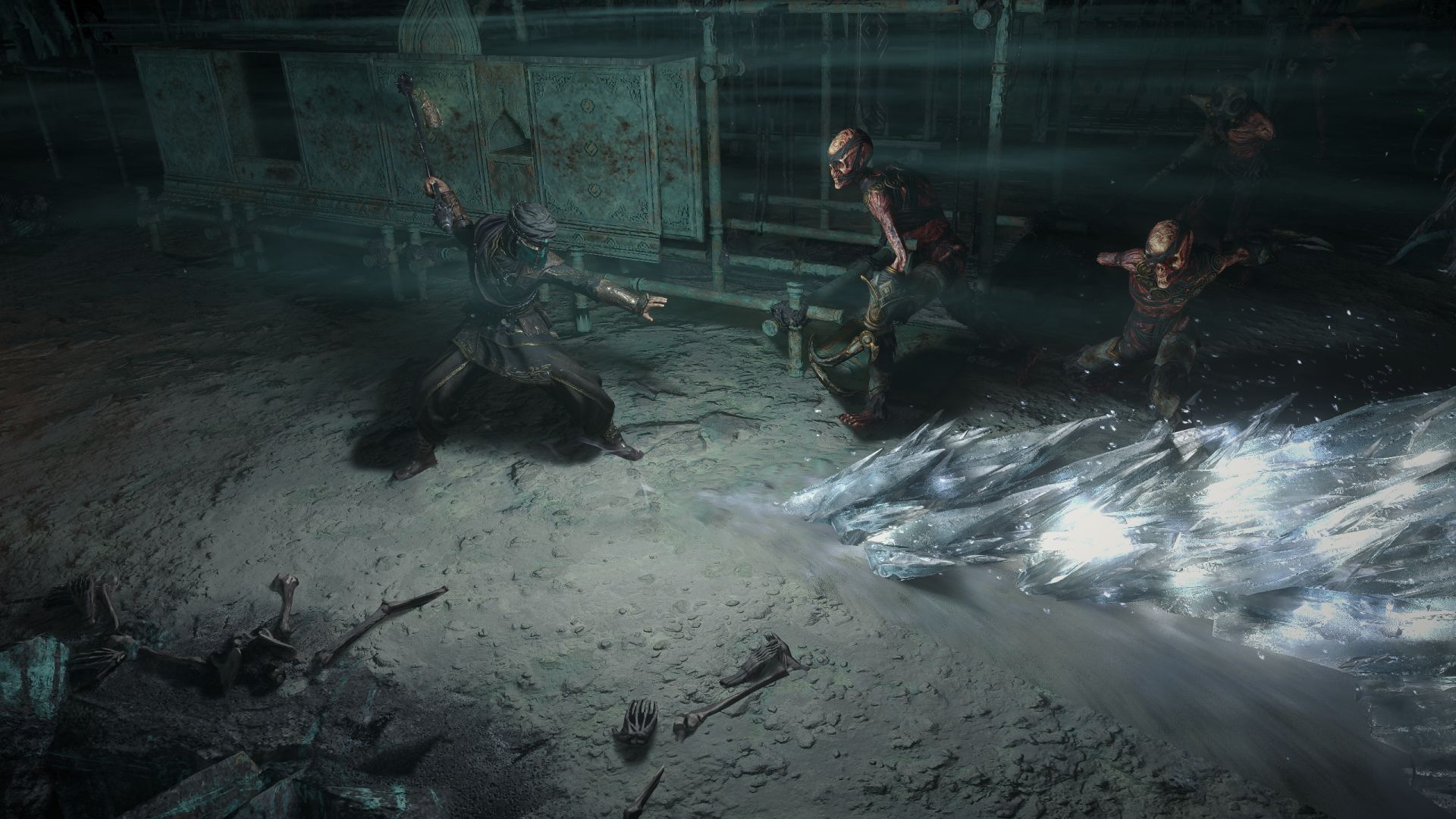
With so many character choices built in already, I asked Rogers what some of the factors the team takes into consideration to balance each of them in the game; what’s the mantra the team follows to ensure each class feels like a Path of Exile class?
“We have really tried to make sure that each class has unique mechanics and ideas, but at the end of the day the real purpose of each class is to deliver on a fantasy that players have. The design needs to make sure we are fulfilling that — if you pick a druid, you want to turn into a bear! Since Path of Exile doesn’t have class restrictions, you can go outside of that and do some really weird combinations. It’s not a question of balancing one class against another, it’s a matter of balancing every individual skill across the entire game with all the others. The reason that classes need to exist is to give you something to latch on to when you start the game to give you a template for how you might build your character, but you can branch out and do anything.”
During my brief hands-on time, I didn’t do much branching out or experimentation here – it was just a short 30-minute session. I was having too much fun spawning skeletons and casting spells to consider the wider implications of how to distribute skill points for my character — I can tinker with that another time when early access for Path of Exile 2 is projected to kick off later in 2024 – but it’s already clear just how flexible the game will be.
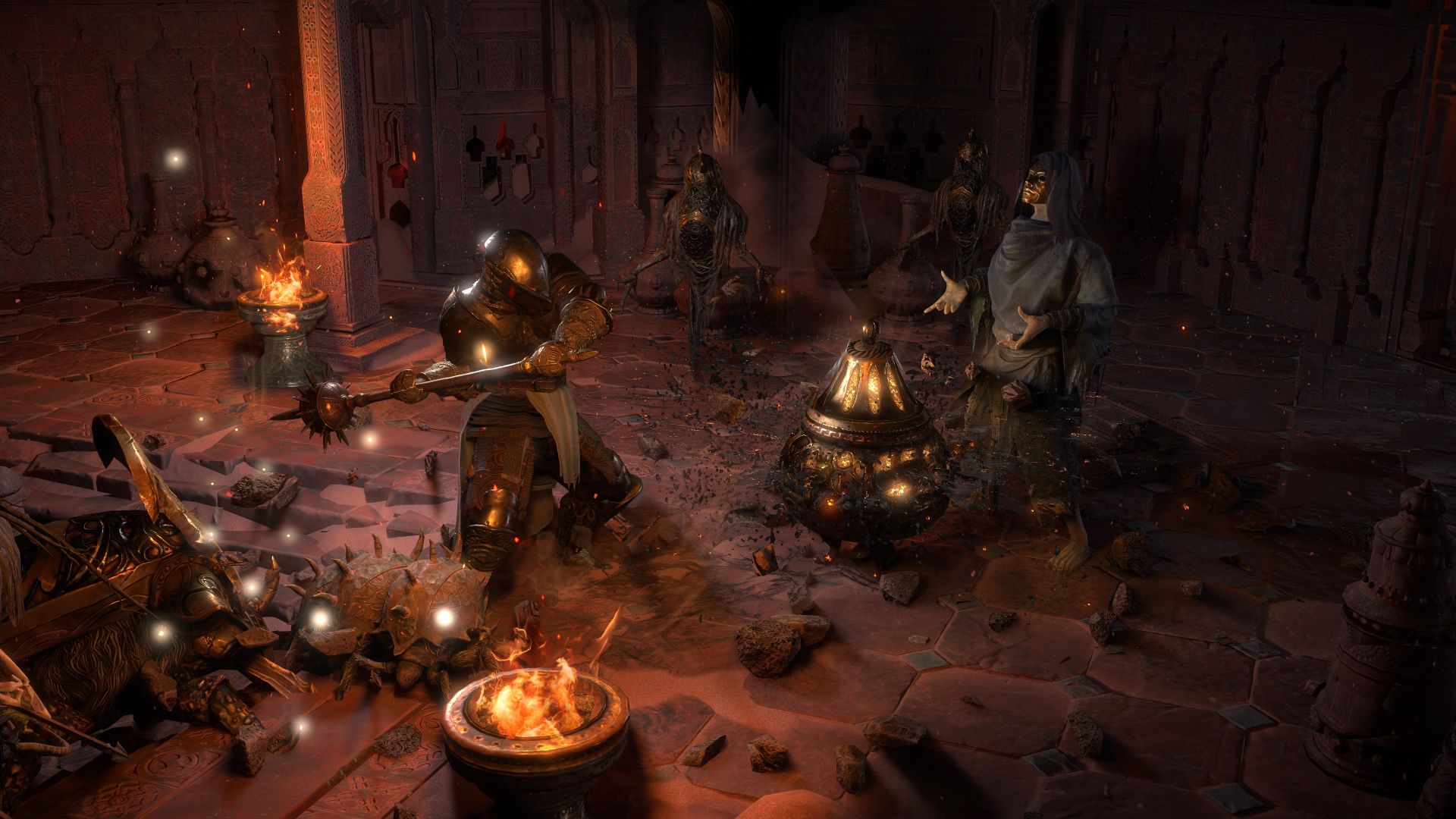
“Path of Exile is a game with a lot of skills, and for PoE2 specifically we want the focus to be around using a good variety of abilities in different ways,” Rogers explains. “This just means that we must be able to solve the problem of having a lot of different abilities easily accessible. At the same time, we have a lot of different character classes and build choices, and the best layout tended to be quite different depending on what you were doing.”
This feeds into the game’s new Skill Gem system that will allow you to take a skill and modify it with up to five additional support gems, rather than having abilities attached to these skills. With 9 skill slots on your character, and each skill having up to 5 supports, you can come up with all sorts of ideas.
“A classic example is Multiple Projectiles. Put it on the Sorceress spell Fireball and you get multiple Fireballs when you cast it. But when you put it on the Monk attack Falling Thunder, it will generate extra projectiles. We try to make it so that if the player thinks ‘Maybe this will work?’ then it should work.”

Also new for Path of Exile 2 will be its console support, with the Xbox version launching alongside the PC release. Rogers explained to me that one of the first things that was super important to the team was to make sure console was a first-class platform and would support cross-play, which in turn led to cross-progression support, as well as implementing couch co-op for the console version.
“We need to make sure that players on console feel like they are part of the same community, and I think that that was one issue that we had with PoE 1. It always felt separate. But we were also thinking about things that we can take advantage of on console platforms that are unique experiences to those platforms, and couch co-op is one of those,” says Rogers.
“You can technically play couch co-op on a PC of course, and I’m sure some people have their PCs hooked up in their living room, but really the experience of sitting on a couch with your friend is something that you get from consoles that you don’t usually get from PC play. It’s also something that I have just personally always enjoyed, and there was a lot of excitement in the studio about it too. We thought it would be a lot of fun, so we decided to go for it.”
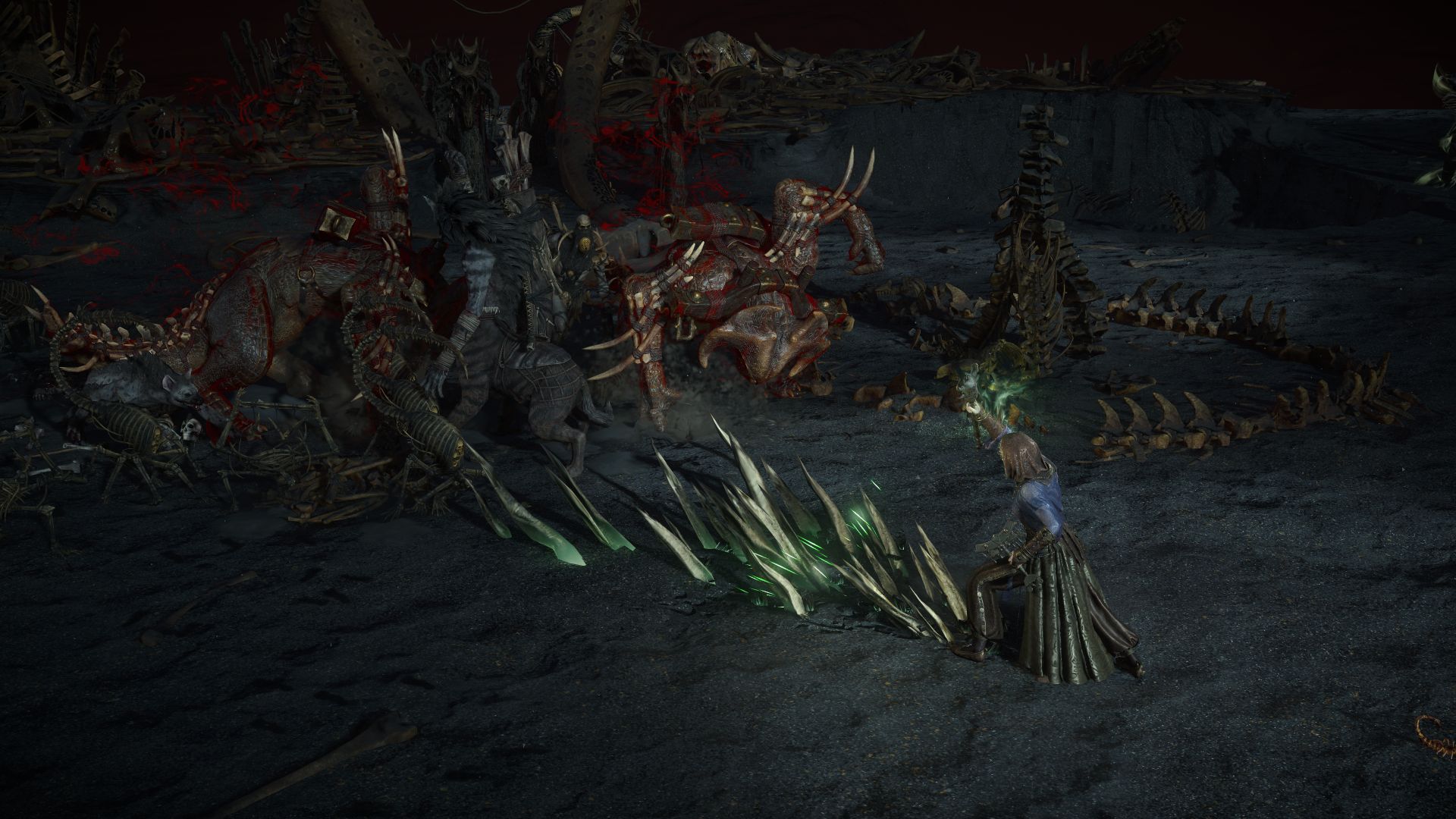
By every measure, it seems Grinding Gear Games has found a way to outdo itself and is primed to deliver another compelling entry in their Path of Exile franchise. With the incredible level of character customization, a dark and sinister world that we’re just dying to explore further, and a slew of console friendly features, Path of Exile 2 is firmly on our radar to be a must-play in 2024.

Path of Exile 2
Grinding Gear Games
The post Path of Exile 2: More Fun, More Flexible, More Evil appeared first on Xbox Wire.

